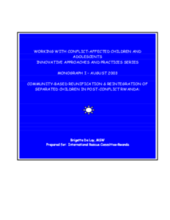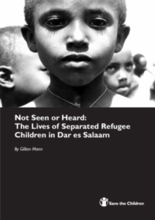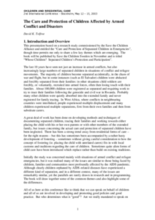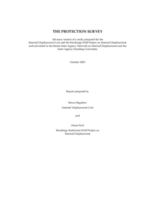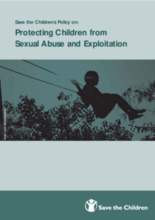Displaying 491 - 500 of 526
This paper hopes to contribute to a sorely under-documented field of how to reintegrate institutionalized children back into the community in a post-conflict environment. It provides a brief description of IRC Rwanda’s Reunification and Reintegration Program for Unaccompanied Children, emphasizing its innovative nature and promising field methodologies. It includes a review of core principles and a programmatic overview of center and community-based work, outlining key steps in the process. It also provides a brief review of good practices and offer some points of reflection for future work with children in post-conflict situations.
A study on the lives of separated refugee children in Dar es Salaam. The study highlights their experiences of abuse and discrimination, and their negative perception of refugee camps.
Documents ways in which youth are mobilized to support political and military agendas, and how the construct of youth has been employed for political change.
Overview of a research study which provides guidelines for care of separated children in large-scale emergencies, focusing on the negative impact of residential care, extended family care, spontaneous and agency fostering, adoption, and alternative placements for adolescents.
Report of a field-based study of international protection for internally displaced persons. Presents conclusions and recommendations for policy.
A policy paper that presents a holistic view of child sexual abuse and exploitation examining all the situations where children are sexually abused.
This research paper explores the condition of orphaned children in Rwanda. The paper urges the design of appropriate social protection mechanisms, including differentiated policy responses, conditional cash transfers and increased access to education.
Examines the link between education and the protection needs of children, with a particular focus on the role of education in emergency response.
Training module outlining key principles concerning the protection of children affected by armed conflict and displacement. Topics include legal frameworks, identifying protection issues, threats to children in emergencies, and promoting healthy child development.
A study on the lives of separated refugee children in Dar es Salaam. The study highlights their experiences of abuse and discrimination, and their negative perception of refugee camps.

